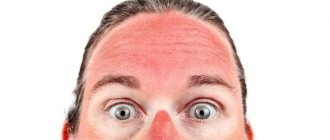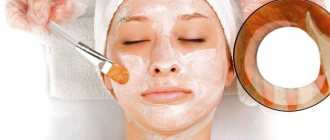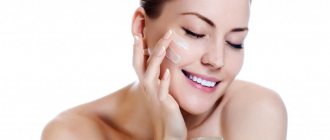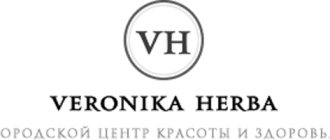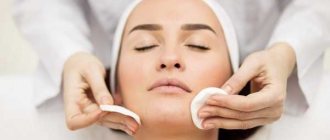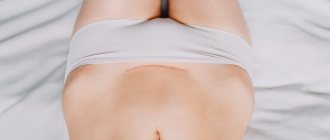Why do you need additional care after peeling?
Peeling is carried out at superficial, medium and deep levels. For this purpose, various drugs and means are used. It could be just scrubs or chemical acids. After exposure to aggressive cleansing substances, the skin receives microtrauma. The recovery period can last from one day to several months, depending on the type of peeling. Temporarily, the skin will develop marks similar to burns.
This condition, as well as severe peeling, is a normal and even obligatory consequence after peeling. But if no measures are taken, this situation can continue for quite a long time. Therefore, in order to reduce rehabilitation time and avoid side effects, masks, gels, and creams should be used.
According to the recommendations of cosmetologists, after peeling you need products with anti-inflammatory, antibacterial, protective and moisturizing properties.
The following types of procedures will help cope with the consequences of peeling:
- Masks for hydration and regeneration. These are special species and are not used for permanent care.
- Soothing to relieve irritation and redness after peeling.
Home care after the procedure has its own characteristics:
- After medium peeling, you should not touch your facial skin for 3-4 days, and the use of decorative cosmetics is also prohibited.
- If it is deep, recovery will take about 30 days. It is extremely important to protect your face from exposure to ultraviolet rays.
- Superficial peeling is the least traumatic; the skin will need a maximum of a day to recover.
- You can return to your usual daily care no earlier than after a week.
- For a month or two you cannot go to baths, saunas, or swimming pools.
- If itching or swelling occurs, you should use soothing, anti-inflammatory masks and gels.
If you build the right care program, it will take much less time for rehabilitation, and the result of the procedure will become more effective.
We recommend reading about chemical peels for the face. From the article you will learn about indications and contraindications for the procedure, chemical peeling preparations, methods of implementation, and results. And here is more information about the rules of facial care after chemical peeling.
What does post-peeling care consist of?
Post-peeling facial skin care depends on what type of skin we are talking about, the individual characteristics of the client, and his age. A very significant role in the development of a restoration program and the choice of post-peeling products is played by the type of peeling performed, superficial, medium or deep. They differ in the nature of the damaging effect and its depth.
With a superficial procedure, which is most often carried out using glycolic, lactic, mandelic, and grape acids, the effect affects only the upper, stratum corneum of the epidermis. Medium peeling is characterized by the fact that the damage affects deeper layers, down to the basement membrane. The most popular options are the Hollywood peel or TCA peel. With deep peeling, even the papillary and reticular layers are affected. In this case, phenolic acid is used as active components.
Depending on the acid used and its concentration, the recovery period also varies. Post-peeling facial skin care after glycolic peeling lasts for a week. This is characterized by redness of the skin after the procedure, slight swelling of the face, and peeling of the skin. To speed up these processes and also avoid complications, you should follow certain recommendations:
- Refrain from washing your face during the day;
- Apply makeup products no earlier than 2-3 days later;
- Use external cosmetics appropriate for your skin type, which should have a moisturizing and nourishing effect;
- For at least 2 weeks, refrain from other procedures associated with trauma to the skin;
- Take active sun protection measures.
Post-peeling facial skin care after retinoic peeling is shorter. Peeling of the skin will stop within 2-3 days, after which you can lead a normal life.
Rehabilitation after a mid-peel with trichloroacetic acid takes longer. Large-plate peeling ends on the 7-8th day, small-plate peeling can persist for another 2-3 weeks. Within two weeks after the procedure, there is also redness of the skin. At the first stage, moisturizing agents are in demand, which facilitates the process of peeling off the crusts. They should be of a delicate structure; gels are preferred.
After this stage is completed, the permeability of the epidermis will be as high as possible, and both moisturizing agents or antioxidants will be in demand, as well as targeted preparations: for sagging skin - containing stimulators of collagen synthesis, retinol, vitamin C, melatonin. In cases where the primary goal is to improve complexion and fight age spots - vitamin C, kojic acid. In this case, post-peeling masks with active ingredients are in great demand. The PLEYANA company has a wide selection of such products and can satisfy everyone’s needs. The product line also includes various peelings and products that are suitable for skin care .
Due to its high damaging effect and painfulness of the procedure, deep peeling is performed more often in a hospital setting. Post-peeling care is also carried out under the supervision of a specialist . In this case, not only external cosmetics will be relevant, but also antibiotics and anti-inflammatory drugs.
Should I make face masks?
The procedures after peeling should be selected by the cosmetologist who performed it. Maintenance should be done according to the type of cleaning. So, in one case it will take only a few days, in another - a couple of weeks. But in any case, during this period you need to be more attentive to your skin.
After chemical peeling
The deep type of cleansing involves the almost complete dissolution of the surface layer of the epidermis. The result is very similar to a third degree burn. He's just as strong. The upper layer of the dermis after deep chemical peeling becomes one continuous wound.
The recovery period is very difficult and painful, it can take up to six months. However, the result exceeds all expectations. After rehabilitation, the skin becomes fresh, radiant, elastic and firm. Deep peeling helps get rid of wrinkles, even very serious ones. Old scars and age spots also disappear. After this procedure it is possible to look several years younger. Typically, the recovery period is divided into four stages:
- During the first twelve hours, the skin should not be touched at all. There is no need to try to use any means.
- At the second stage, you need to make compresses and lotions from slightly acidic solutions. In addition, the surface of the skin should be treated with ointments with soothing properties or Vaseline. The cosmetologist who performed the deep peeling prescribes a special moisturizer. It must be applied to the entire surface carefully, without injuring the skin, or you can make compresses and applications.
You cannot look for this remedy on your own; it should only be prescribed by a specialist who sees the picture and the individual reaction.
- On the third day and over the next two weeks, you need to go to a special dressing - occlusive. This means applying a cream that helps the formation of a new healthy layer of epithelium, without scars or side effects.
- The final stage lasts until the normal dermis is completely restored. Each person is different. All this time, ointments and other products that have regenerating properties should be used. It is also important to constantly use a cream with a high SPF factor.
At the end of the recovery stage, you can make tonic and moisturizing masks from sour cream, honey, yogurt, fatty oils, and oatmeal.
After superficial
Fruit acids do not damage the dermis as much, so care is not so difficult. With superficial peeling, substances are applied to the skin that can only dissolve the epidermis. During the procedure, tissues deeper than the dermis or basement membrane are not affected. Peeling is carried out with lactic, fruit, retinoic, salicylic, glycolic acids or enzymes. As a result, a skin burn occurs, caused by a cosmetologist.
Since the impact is not very strong, it is important to follow some rules after exfoliation:
- The skin needs to be cleansed carefully and delicately.
- It needs constant hydration.
- It is important to choose products with a high degree of protection from external factors.
As a rule, the maximum recovery time does not exceed a month. During the first 5 - 7 days, there is severe peeling of dead cells as a result of peeling. At this time, do not use aggressive cleansers. In addition, it is necessary to use a cream with a high sun protection factor. Otherwise, age spots may appear, which will be much more difficult to remove.
However, you should not use such products yourself, since only a cosmetologist who performed facial cleansing can prescribe any cosmetic or therapeutic ointments, creams or sprays.
A few days later, as soon as the doctor allows, you can make soothing masks with herbs, moisturizing masks with honey, sour cream and fatty oils.
With proper and competent post-peeling care, you can enjoy the result for a long time without experiencing any side complications.
After the middle
This type of exfoliation involves exposure no deeper than the surface layer of the epidermis. But the burn after the procedure is stronger than with the type of cleaning described above. The cosmetologist acts on the skin with acids and enzymes, the concentration of which is up to 50%. As a result, the dermis receives quite serious injury.
Post-peeling care includes all the same recommendations as described above, as well as the constant use of a cream with a high degree of protection. You can even use a complete sun block. The recovery period can last several months, so during this time you need to apply a protective cream.
Sunscreens
It is best to carry out such procedures in the autumn, when the sun is not so hot and active. But products with a high SPF factor must be applied before every exit from the house, even in winter.
To ease the feeling of tightness, as well as speed up healing after peeling, you need to make moisturizing masks and apply nourishing cream several times a day.
To learn about skin restoration after peeling, watch this video:
Why do you need scalp peeling?
Every day our hair is exposed to harmful external factors. Dust and dirt from the street settle on the head, cosmetics accumulate on the hair and skin surface, overproduction of the sebaceous glands leads to clogged pores. As a result, metabolic processes in the skin are disrupted, and hair becomes dull, loses vitality, and grows more slowly.
Peeling from the English word “to peel” (“exfoliate”) involves removing dead epidermal cells from the surface of the skin. Scientifically, this process is called “exfoliation.” The principle of peeling for hair and scalp is the same as for a similar procedure for the face and body.
With regular cleansing, the functioning of the sebaceous glands is normalized, itching and other unpleasant sensations are eliminated. Exfoliation accelerates scalp regeneration, activates cellular metabolism, stimulates skin tone, improves nutrition and blood supply to hair follicles. Peeling with certain components has an anti-inflammatory and antimicrobial effect, eliminates excessive oiliness of the scalp, removes toxins, and stimulates hair growth.
Exfoliation tasks:
- removing dead cells, dust, dirt, excess sebum, and cosmetic residues from the surface of the head;
- ensuring the penetration of beneficial substances contained in masks, scrubs, balms to the follicles. After peeling, cosmetic and medicinal hair products are much more effective;
- improving blood circulation and increasing the flow of oxygen to the roots, which stimulates the growth of new hair.
Girls who regularly do this procedure at home or in the salon note that their hair stays clean longer, and generally note an improvement in the quality of their curls, a stop in hair loss and the active growth of new hairs, a feeling of lightness and freshness.
How long after peeling can you make masks?
After peeling, any caring procedures are stopped for 3 days, after which you can make masks, use professional cosmetics and herbal decoctions for washing.
If the procedure for deep cleansing the skin was accompanied by complications, or during the recovery period there is a general increase in body temperature, severe swelling and other side effects, then you cannot use any care masks. At least, such a ban is in place before consulting a cosmetologist.
When can you use paraffin masks after a chemical peel?
Paraffin masks after chemical peeling can be done already on the second day, but only if the procedure itself and the short rehabilitation went without complications. You will need to apply a moisturizer to the skin, then lay a thin gauze napkin on top and apply the product in question on it. Eyelids should be protected with cotton pads.
Composition of paraffin masks: main substance + olive oil + beeswax (proportions 50 g/20 ml/5 g, respectively). If your skin is oily, then the amount of olive oil in the composition should be reduced by 2 times.
Applying a paraffin mask
The paraffin mask is applied in a layer of 0.5-1 cm and remains on the face for 15 minutes. It is recommended to carry out 10-15 such procedures once a day with a break of 24-48 hours.
How to prepare for the procedure
Peeling is a fairly active procedure, after which a recovery period is usually required. In order to obtain the desired result and eliminate any negative complications, not only rehabilitation measures are important, but also how the skin is prepared for peeling . In some cases, washing with lemon juice may not be enough. A more serious program will be needed. In order to properly prepare the skin for peeling , before the procedure it is necessary to consult with a specialist who will take into account all the clinical features, the nature of the upcoming impact, and, taking into account the identified factors, will draw up a program of action and select the necessary means.
The best masks
It is important to understand that chemical peeling is a serious procedure that causes burns and requires long-term and careful care. Therefore, you can carry out certain activities after it only as prescribed by a cosmetologist and only when he allows it.
Moisturizing
The most common masks after peeling are those that help remove tightness and restore skin moisture balance. The following types of moisturizing masks will quickly relieve discomfort:
- Grape seed oil, shea butter and fatty acids help with peeling. They should be applied carefully along the massage lines, without stretching the skin.
- A banana mask also moisturizes well and saturates the dermis with minerals and vitamins.
- Olive oil with a couple of drops of a solution of vitamins A and E will help quickly restore the epithelium and prevent the appearance of age spots and scars. This mask will soothe irritated skin and eliminate inflammation.
- Special ready-made products for moisturizing the dermis, prescribed by a doctor.
Alginate
When the skin has already recovered a little and has become less sensitive, it is possible to use masks with a more intense effect.
Alginate mask promotes:
- deep hydration;
- better penetration of active substances from creams and serums;
- oxygen saturation;
- relieving swelling and redness;
- increasing hydrolipid balance;
- skin toning;
- detoxification of the epidermis;
- anti-inflammatory effect.
Alginate mask
For skin care after peeling, products containing components such as:
- soothing: titanium dioxide, aloe extract, chestnut, panthenol, bisabolol, retinol, shea butter, ceramides and omega-6;
- increasing elasticity: collagen, placenta, elastin, chizotan;
- nutritional: vitamins A, E, C, vegetable oils of avocado, peach, grape seeds, wheat germ, rose, green and white tea extract.
However, under no circumstances should you self-medicate. All masks and skin care products should only be prescribed by the doctor who performed the chemical peel.
At home from what's on hand
Sometimes the doctor may prescribe medications that the patient cannot afford. In addition, they also contain the active ingredient, but the price is much higher. To provide first aid for unpleasant sensations, the following usual means are used:
- D-panthenol in the form of cream and spray. You should have both because different types of medication are worth using at different stages of recovery. It helps moisturize the skin.
- Lyoton-gel and Arnica cream can relieve redness.
- Troxevasin helps with edema.
- Zinc ointment and other agents with antimicrobial properties prevent inflammation.
Mask after chemical peeling of the face
For the first 3 days after chemical peeling of the face, no masks are used at all - you need to give the skin time to “rest” and partially recover. Then experts recommend using:
- Soothing masks . They are cosmetic oils in combination with each other or as an independent product. For example, applying a thin layer of grape seed oil will be effective. You can add a small amount of chamomile oil to it, which has an anti-inflammatory effect - add 10 drops to 1 teaspoon of base.
- Moisturizers . Can be used for facial care only on the 5th day after chemical peeling. The composition is simple - honey and cosmetic oil. To prepare the mask, you will need liquid honey, if it is candied (too thick, crystallized, then it needs to be melted in a water bath. Then add ½ teaspoon of almond, peach or olive oil to 1 teaspoon of bee product, mix everything.
- Toning masks . They can be used on days 10-14, at the very end of the recovery period, when there are no traces of chemical peeling on the face. Such masks may include sour cream and oatmeal flour, strawberry puree and natural yogurt, honey and apple puree. The proportions in each combination are the same for all ingredients.
Masks can be used daily. Apply to the facial skin for 15-20 minutes, then wash off with warm water without soap or any other detergents. Since the composition contains natural ingredients, you need to be sure of an adequate reaction to them - after chemical peeling, the sensitivity of the skin increases significantly.
Mask after glycolic peeling
Glycolic peeling is an aggressive cleansing of the skin, after which it is suggested to use only moisturizing masks. In the first 3 days, you should not use any care products at all, except those prescribed by the cosmetologist himself. But for 4-5 days you can use the following formulations:
- cosmetic oil - grape seed, almond, peach (you can add chamomile flower oil to it - 5 drops per teaspoon of base);
- sour cream 20% + liquid honey – combined in equal quantities;
- natural yogurt + sea buckthorn oil – you can add 3-5 drops of aloe juice to this composition if there is severe redness on the skin after peeling.
As soon as active peeling of the skin begins, you should wipe your face every 3 hours with a cotton swab dipped in cosmetic oil. This will soften the crusts, reduce the intensity of peeling and speed up the completion of the recovery process.
Soothing face mask after peeling
Soothing face masks after peeling can solve the problem and shorten the recovery period, because the face after deep cleansing is a damaged skin surface that turns red, “burns” and acquires the highest possible sensitivity. They contain natural ingredients, so you need to make sure you are not allergic to them. The most effective means are considered:
- Oatmeal mask . You need to grind 2-3 tablespoons of oatmeal into powder, add warm water to it in such an amount that after mixing you get a mass identical to liquid sour cream.
- It is left to swell for 10-15 minutes, after which it is applied to the face in a thick layer.
- Kefir Potatoes . Grate one medium potato tuber on a fine grater and squeeze the mixture out a little. Add 1 teaspoon of full-fat kefir or natural yogurt to it, mix everything and apply to the skin of the face. The mask is washed off after 20 minutes, which must be spent in a horizontal position, in a relaxed state.
- Coconut . 2 tablespoons of coconut oil are combined with 1 tablespoon of oatmeal (cereal powder) and 50 ml of chamomile flower decoction, mix everything. The decoction is prepared according to the classic recipe: 1 tablespoon of plant material per 300 ml of water, boil in a water bath for 10 minutes.
Watch this video on how to make a soothing face mask from parsley and sour cream:
Revitalizing face masks after peeling
You can speed up the rehabilitation process with restorative facial maxims ; after peeling, they will be useful for any skin type:
- 10 g dry yeast + 50 ml warm kefir + 1 teaspoon linden decoction . First you need to introduce yeast into kefir, then wait 10 minutes and pour in the broth, mix everything thoroughly. The mask is applied to the face for 30 minutes.
- Honey + lemon juice . You need to mix 1 teaspoon of bee product and 5 drops of citrus juice, apply a thin layer to your face and leave for 10 minutes. This mask is quite aggressive, so it cannot be used on the first day after peeling.
- Banana + sour cream . Mash the pulp of ½ medium banana with a fork and add 1 teaspoon of sour cream to it. This mask is especially good at restoring dry skin after peeling. The mass is applied to the face for 20 minutes, can be used 2 times a day - in the morning (peeling will be less noticeable) and in the evening.
Peeling procedure
The skin around the eyes is an area where signs of aging appear quite early. And many women are concerned about the question of how to slow down the appearance of wrinkles and smooth out existing signs of age.
I think it’s no secret to you that cosmetologists do many salon procedures for themselves. But how nice it is sometimes to be in the client’s place - to lie down on the couch, relax and put yourself in the caring hands of another professional.
Allergy test
Before the procedure, the cosmetologist does a test on my hand to check if I am allergic to the components of this peeling. If there is increasing redness, it means there is an intolerance to some components and this peeling cannot be performed.
But you can see that I don’t have any redness, so you can safely proceed to the chemical peeling procedure.
Skin cleansing
The first stage of peeling is cleansing with a special gel, which will not only cleanse well, but also degrease the skin before the procedure. After washing, the cosmetologist thoroughly blots the face with a napkin to thoroughly dry the skin before applying peeling.
Peeling application
Now the skin is ready for the procedure and the cosmetologist begins to apply peeling. This drug is called peeling for the area around the eyes, lips and neck, but you see that in fact the cosmetologist applies the composition to the entire face.
This is necessary, firstly, so that after the procedure there is no symptom of glasses - that is, so that there is no difference between different areas of the skin, and secondly, 1-2 procedures of such peeling can serve as preparation of the skin for more serious chemical peels.
That is, this peeling can become a full-fledged replacement for home pre-peel preparation, which, you see, is very convenient - it turns out to be two in one - peeling for the contours of the eyes and neck and pre-peel preparation for stronger peelings for the face.
Peeling composition
This peeling contains lactic acid, which is known for its moisturizing properties, and glycolic acid, which has a pronounced brightening and rejuvenating effect.
But the most remarkable thing that actually interested me in this peeling is that it contains argiriline, a hexapeptide that is a cosmetic alternative to botulinum toxin injections.
That is, it imitates the effect of Botox - it relaxes the muscle and thus helps eliminate small wrinkles and reduce deep wrinkles around the eyes, and of course prevents the appearance of new ones.
As a rule, chemical peels are not applied to the area around the eyes and it remains untouched, although signs of aging in this area are usually the most worrying for women. And this peeling allows you to work on this area.
Feelings during peeling
During chemical peeling, itching and burning are felt to varying degrees, and to reduce the client’s discomfort, the cosmetologist usually uses a fan or fan. But this peeling is tolerated quite comfortably. Of course there is a slight tingling sensation, but it is so mild that I tell the beautician that there is no need for a fan.
Application of neutralizer
The exposure time is over and the neutralizer is applied to the skin. A neutralizer is necessary to stop the action of the acid. At this moment, a slight burning sensation is also felt. But after a few minutes everything is thoroughly washed off with cool water. The peeling is over, I feel great, but the best part is yet to come.
After washing, the cosmetologist wipes the skin with a soothing tonic. A moisturizing gel is applied to the area around the eyes, and a regenerating concentrate with Asian centella is applied to the facial skin. It helps quickly restore the skin after a chemical peeling procedure.
Alginate mask
Then the cosmetologist prepares a soothing alginate mask. This mask perfectly relieves irritation, swelling and redness of the skin after chemical peeling, and also promotes deeper penetration of the concentrate or serum that is applied after peeling, that is, it serves as a conductor.
Many women often make a rather big mistake - they skimp on post-peeling home care. But this is just not the case where you can save money. Firstly, because after a chemical peel, the skin is temporarily drier and dehydrated and needs good care more than ever.
And secondly, because after peeling, the skin, like a sponge, perfectly absorbs the active components that are contained in the cream or serum, and during this period there is an excellent opportunity to deliver useful components to the deeper layers of the skin without hardware or invasive procedures.
Therefore, if you decide to undergo a course of chemical peeling, this is the best time to purchase good cosmetics for home care - during this period you will get the maximum result from such cosmetics.
The alginate mask is applied to the entire face and neck, including the eyes and lips, and remains on the skin for 15-20 minutes. I really love alginate masks - they pleasantly cool the skin after any salon procedure and give a lifting effect.
After the cosmetologist removes the mask, you can see that the skin looks completely calm. Of course, there is a slight redness in the area of the nasolabial folds, but this is quite normal - after all, we did a chemical peel, and not a spa procedure.
At the end of the procedure, the cosmetologist applies a cream for the skin around the eyes and an anti-aging serum that matches my age. Then the serum is covered with a high SPF cream - sun protection is necessary after chemical peeling.
How to apply a mask or aloe gel after peeling
After peeling, aloe gel will be an effective restorative agent, which can be applied as a stand-alone preparation or as part of a mask. If we are talking about the second option, then to prepare the mass you will need to add ½ tablespoon of dry seaweed (for example, seaweed/kelp) and the same amount of honey to 1 teaspoon of the main preparation.
Everything is thoroughly mixed and 1 capsule of vitamin E (sold in pharmacies) is added to the resulting mixture.
This mask is applied to the face for 20 minutes; you can simultaneously treat the neck and décolleté area.
What is the difference between home peeling and salon peeling?
You will never get burns or red spots from home peelings
You need to understand that homemade natural compositions are the safest for the skin, since they carefully and accurately remove the dead stratum corneum, while simultaneously ensuring the supply of vitamins, minerals and microelements that are important for the health of the epidermis.
However, they act only on the surface and in the upper layers of the epidermis, while chemical types of peelings can penetrate deeply, reaching the middle layers of the dermis itself. For this reason, home peeling will not rid your skin of wrinkles, age spots, scars left after acne, but with regular use it will noticeably improve its condition, increase turgor density, elasticity and provide a healthy complexion. In addition, from home peels you will never get burns and red spots that do not disappear within 2 to 3 weeks.
Masks after retinol peeling
After retinol peeling, the skin of the face acquires a yellowish tint, so in your care it is worth using masks that have a whitening effect. The following combinations of components are characterized by this:
- rice flour (1 tablespoon) + low-fat sour cream (2 tablespoons);
- fresh cucumber pulp + 1 teaspoon honey;
- oatmeal powder + water.
Any of these masks should have the appearance of sour cream with a thick consistency. If there are signs of irritation on the skin, or recovery occurs with complications in the form of severe redness of the skin, then a small amount of decoction of chamomile flowers, sage or string can be added to the composition of the products.
On the 3-4th day after the procedure, you will need to add moisturizing masks to your care; the easiest way is to use cosmetic oils. They will soften the skin, prevent excessive peeling and speed up the process of shedding epidermal scales.
Why is peeling performed?
The processes of regeneration, rejuvenation and effective renewal are launched
Everyday washing with soap, and even more so with cosmetic milk or lotion, does not remove dead cells of the stratum corneum that have accumulated on the surface of the skin, preventing it from breathing, absorbing nutrients from masks, creams, and also actively renewing itself, thereby contributing to its withering and premature aging .
Deep and effective removal of the dead layer is ensured by special compositions - peelings, which remove all excess from its surface. After such treatment, the epidermis begins increased production of its own collagen and elastin, which serve as the basic framework of the skin at the cellular level. The processes of regeneration, rejuvenation and effective renewal are also launched.
Is it possible to apply acid masks after peeling?
After peeling, the facial skin is one large wound surface that needs to be rested, so applying acid masks during this period is strictly prohibited. Doctors do not even allow you to touch the treated dermis again! Acid masks lead to serious complications:
- severe irritation;
- constant presence of a burning sensation;
- burns of delicate skin;
- uncontrollable itching.
Together, this will provoke the development of an inflammatory process, which can result in long-term therapy with the use of specific antibacterial drugs.
Is it possible to make a mask after peeling the roll?
Roll peeling is done at home and dries the skin as much as possible, so after it you can and should make moisturizing, soothing masks. And there is no 3-day rule, during which any manipulation of the facial skin is contraindicated.
Immediately after washing off the applied peeling agent, you need to apply a centimeter layer of any moisturizing mask to the treated skin - for example, based on fat sour cream or natural yogurt. To these bases add oatmeal, honey or chamomile decoction in equal proportions.
Is it possible to make a clay mask after peeling?
After peeling, you can make a clay mask, but only if the following conditions are met:
- peeling should not be too aggressive;
- use only white or blue clay;
- The time the clay mask stays on the face should be halved and be only 10 minutes.
The mask will be especially effective on oily skin with open pores - clay is able to cleanse and tighten them, which is important after peeling to achieve the result of an “absolutely clean face” . If your facial skin type is oily, then cosmetic clay for preparing a mask is diluted with warm water, but for dry skin types, a fatty fermented milk product is better suited.
After such a mask, you will need to lubricate your face with moisturizer - clay tends to dry out the skin, which can significantly increase post-peeling peeling.
Cosmetologist's advice
Usually, after a peeling session, cosmetologists tell patients how to care for injured skin. When to start care, what products to use, how often, depends on the intensity of the mechanical or chemical effect. But there are universal tips that experts give to all clients:
- Treatments can be carried out only 3 days after peeling. If the recovery period is accompanied by swelling, fever and other complications, then masks cannot be used even after the specified time, until the cosmetologist allows it.
- Not every patient can purchase high-quality store-bought masks and other post-procedure care products. You can replace them with cheap pharmaceutical drugs: cream with panthenol to eliminate discomfort, Lyoton gel to moisturize and relieve redness, decongestant ointment Troxevasin, zinc ointment to extinguish inflammation.
- After peeling, you should absolutely not use masks with an acidic composition.
- You can make masks with clay, but only after mild peeling. Take white or blue clay and keep it on your face for no more than 10 minutes.
- To get rid of peeling, it is recommended to treat your face every 3 hours with a cotton swab moistened with grape or other cosmetic oil.
To avoid complications, it is important to properly care for your skin after peeling, and moisturizing and soothing masks help with this. To prevent care from causing harm instead of benefit, it is necessary to follow the recommendations of the cosmetologist and not self-medicate.
Rating
What to do with your face after a mask
After the mask, the face should be washed with warm water without using detergents, then the skin is dried naturally - towels and napkins should not be used so as not to damage the irritated skin by friction.
The next step is applying a moisturizer, which should be present in the procedure regardless of what type of skin is being treated. The cream is applied with soft circular movements; do not rub it in.
We recommend reading about TCA facial peeling. From the article you will learn about the indications and contraindications for TCA peeling, the drugs used, the method of implementation, and the effectiveness of the procedure. And here is more information about how to care for your face after TCA peeling.
After chemical peeling, the skin needs special care, constant hydration and nutrition. Such care guarantees a high-quality result that will please you for about a year or even longer. However, you need to select a treatment and, especially, a product for it, only after consulting with a cosmetologist who did the exfoliation.
results
The procedure is over. Satisfied and rested, I get up and share my impressions with other cosmetologists who attended this master class.
If we talk about my impressions, I really liked this peeling. Firstly, because it is very comfortable to wear, because I have sensitive skin. But as you can see, she looks completely calm, although I'm not wearing any foundation.
And secondly, the fact that the effect is visible from the first procedure. I feel lifting, my nasolabial folds have smoothed out a little, and the skin around my eyes has tightened.
Clients often ask, “What will I look like after a chemical peel? Will I be red? Flaky? Will I be able to go outside at all?”
This peeling is quite gentle. I have very sensitive skin, but as you can see, I don’t have any foundation or powder on my face. I only put on a little eyelashes and lip gloss, but my skin looks calm.
So if the peeling is gentle, then there is absolutely no need to worry. Immediately after peeling, you can go to work or on a date.
Recommended reading:
Olga Fem
For more than 10 years, I have been helping my clients prolong the youth of their skin and give it a beautiful and well-groomed appearance. Now, with the help of my books “Self-Teacher for Skin Care #1”, “55 Mistakes in Facial Care” and self-massage of the face “Renaissance”, almost everyone can improve their skin condition!
Useful video
For information on what not to do after a chemical peel, watch this video:
Similar articles
- Peeling with salicylic acid (chemical, enzymatic)...
At home, peeling with salicylic acid (chemical, enzymatic) yourself is not a problem. The procedure is carried out quickly, and afterward the face pleases with its fresh appearance and beauty. Read more - Care after chemical peeling: what to do with the skin...
Care after chemical peeling plays an important role in the restoration of facial skin. It is not difficult to implement at home, but for superficial, medium and deep it will be different. What masks can you make at home? Is it possible to use a scrub, go to the bathhouse, drink alcohol? How long does peeling last and when does it start, how to remove it. How to care for scabs. Read more
- A person after a chemical peel needs...
The cosmetic procedure chemical peeling for the face has several types: deep, medium, light. How often should I do it? What does your face look like after? What are the contraindications? Which acids are considered the best? Read more
- Care after TCA peeling: how to care for your facial skin...
Proper care of your facial skin after TCA peeling will help you avoid unpleasant complications. What to do day by day after the procedure? What are the features of care after medium and deep peeling? Why do you need to wash your face with acidified water? Memo to the patient: what procedures can be done, what cannot be done and why. Read more
The best post-peeling cream: a review of products with proven effectiveness
In addition to moisturizers, you will also need skin cleansing products. The stronger the effect of the procedure, the longer you need to wait before you can use cleansers.
RHEA Gentle Facial Cleanser (sense)
A gentle face product from the Sense line gently cleanses the skin without disturbing the pH balance.
The cleanser contains natural oils and tocopherol, which protect, relieve itching and redness, and soothe the skin.
Buy at DAVIANI Shop: RHEA Gentle Facial Cleanser (sense)
Moisturizers after peeling should contain proteins, panthenol, hyaluronic acid, hydrogels and antioxidants, natural oils and amino acids. Avoid harsh, exfoliating products that contain simple alcohol or vitamin C.
Ultra intense moisturizing cream
Multifunctional cream from Ultraceuticals Ultra Rich Moisturiser Cream is an ideal rehabilitation product after cosmetic procedures, suitable for dehydrated and damaged skin.
Panthenol, urea and sodium hyaluronate intensively moisturize, saturate the skin with oxygen, and strengthen fibroblasts. Caffeine in the cream relieves puffiness, restoring a healthy glow to the face.
Buy at DAVIANI Shop: Ultra intense moisturizing cream
Ultra protective moisturizing cream spf 30 with a light toning effect
Ultraceuticals Ultra Uv Protective Daily Moisturizer Spf 30 Sheer Tint has a dual effect: deeply moisturizes and protects the skin from UV radiation, which is especially important after peeling and other cosmetic procedures.
Active components such as Panthenol, hyaluronic acid and glycerin accelerate cellular metabolism, protect the epidermis and deeply nourish. The product has a weightless texture and is easily absorbed.
Buy at DAVIANI Shop: Ultra protective moisturizing cream spf 30 with a light toning effect
RHEA E-Balm Nourishing facial moisturizer
Moisturizing cream from RHEA E-Balm Nourishing face cream restores the lipid balance of the epidermis, protects and nourishes tissues.
The composition contains natural ingredients: Panthenol, wheat germ oil, jojoba oil and other active substances.
Buy at DAVIANI Shop: RHEA E-Balm Nourishing facial moisturizer
RHEA Revitalizing face mask (sense)
A nourishing face mask from the Sense line restores the skin, has a soothing effect, and fights itching and flaking.
Thanks to allantoin, tocopherol and natural oils in the composition, the mask starts tissue regeneration processes, has an anti-inflammatory effect and promotes healing.
Buy from DAVIANI Shop: RHEA Revitalizing face mask (sense)
The material was prepared by professional cosmetologists of the DAVIANI premium salon. On the website daviani-shop.ru you will find products with proven effectiveness for different skin types, including cellular cosmetics for care, as well as products for hair and nails.

